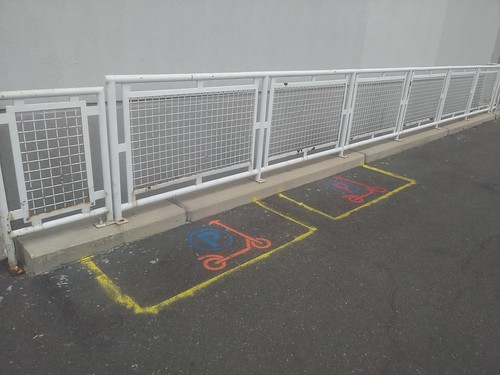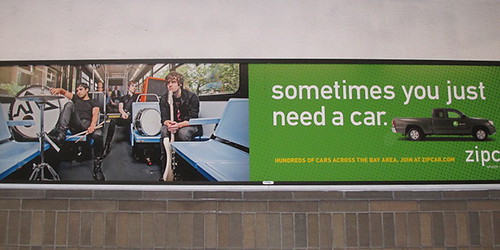Car free vs. car light/lite
CityLab has an article, "The Best and Worst U.S. Places to Live Car-Free," which I think misses the point a little bit, at least in the headline.
The point should be to reduce car use as much as possible. That doesn't mean absolutely car free, but to live where you're not car-dependent and you don't have to use a car very much, but you can still access a car when it makes sense for your trip needs.
 I write about this in terms of what I call the Sustainable Mobility Platform and I have written that "DC is a market leader in Mobility as a Service (MaaS)."
I write about this in terms of what I call the Sustainable Mobility Platform and I have written that "DC is a market leader in Mobility as a Service (MaaS)."DC is a great example of how you can live without being reliant on a car to get around, including not needing to use taxis/ride hailing, but as needed you can supplement with one-way or two-way car share, car rental, or taxis/ride hailing.
In my transportation scenario, I mostly rely on the bicycle, use transit (subway or bus) a little bit, walk some (I joke that if it's more than a half block, I cycle), one-way car share for in city trips, especially with two people (sadly, the cost of Metrorail for two people, especially when you take into account the 20 minute walk to the station, is greater than the cost of a one-way car share).
We may rent cars for trips, when people are visiting, etc. But even when we travel on vacations, I find that you can get around by transit, car share (if those cities have programs you're a member of), bike share, etc.
Delivery helps to extend your ability to not use cars, although indirectly it can contribute to congestion.
In the process of fixing my house over the past few months, I used Zipcar a lot. Zipcar is a two-way car share, you have to return the car to where you got it, and you have to rent it for a minimum of one hour. But the fleet includes a wide range of vehicles including pick ups, vans (I don't like driving them), and minivans.

I took stuff to the dump, Community Forklift, went to Home Depots in the suburbs because the city store had a more limited inventory (although I bought plenty of stuff at the DC Home Depot via bike), made a bunch of trips to Walmart (boxes and tubs, and they happen to be very close to me, although I was amazed at the frequency of out of stocks or severely limited quantities), and trips to various vendors, artisans, etc.
I used Zipcar more in the last six weeks than I did in the entire previous year.
But it was great. I didn't need to own a vehicle to accomplish all those things. But I could use one.
(I bought a bunch of boxes and a few roller shades at Walmart, and then, my bike's brakes weren't so great, and I just couldn't manage this on my bike, going downhill. A lady saw me struggling, stopped her car, and offered to drive my stuff to my house. She was surprised by the way that on bike, I got to my house about as fast as she did.)
Anyway, in a private e-discussion we were talking about car share and how car sharing firms are discontinuing service in many markets, and I made the point that you have to have the right antecedents for a Sustainable Mobility Platform to be able to be created and sustained.
The antecedents (1) urban form; (2) density; and (3) a robust transit network preferably rail-based.
In these places you have the form and density to be car free, and the support of a transit system to be able to get places beyond walking distance. Then, you can layer on everything else--bus and shuttles and jitney-type service to extend the transit system, bike share, car share, e-scooters, e-bikes, taxis and ride hailing (which are sustainable modes only when used in moderation, not when used instead of transit), delivery, etc.
This all gets back to Peter Muller's paper, "Transportation and Urban Form: Stages in the Spatial Evolution of the American Metropolis."
Cities designed during the Walking (before 1890) and Transit City eras (1890-1920) are built for sustainable mobility. Cities built afterwards were built for automobility. And it's very difficult to repattern such cities for sustainable mobility.
That includes car share. In places where the vast majority of people "need" cars to get around for the simplest of tasks, people buy cars because it's cheaper than fractional use if you are using those cars for multiple trips every day.
Because you need the right urban form and reasonable population density and a decent transit system, I think it's difficult for most places to shift to a sustainable mobility paradigm.
Labels: car culture and automobility, sustainable mobility platform, sustainable transportation, transportation planning, urban design/placemaking






0 Comments:
Post a Comment
<< Home